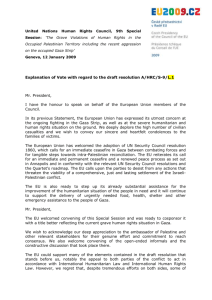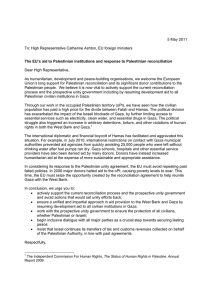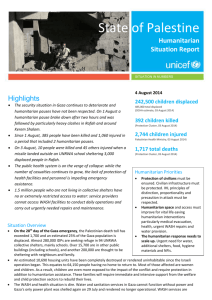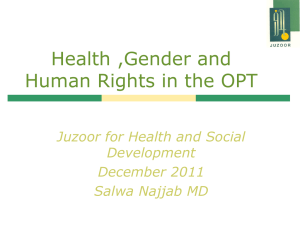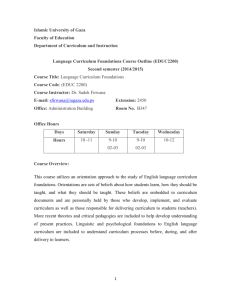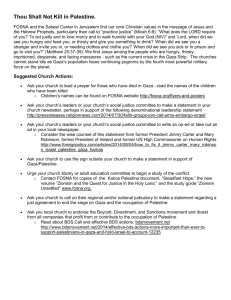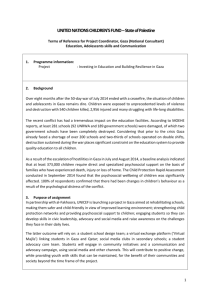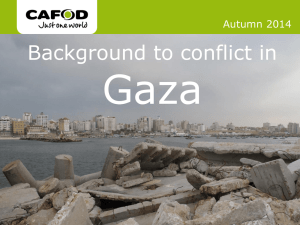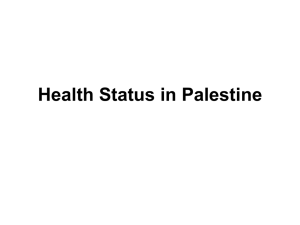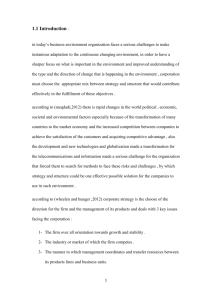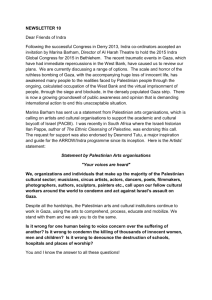Gaza crisis Fact Sheet 5 August 2014
advertisement
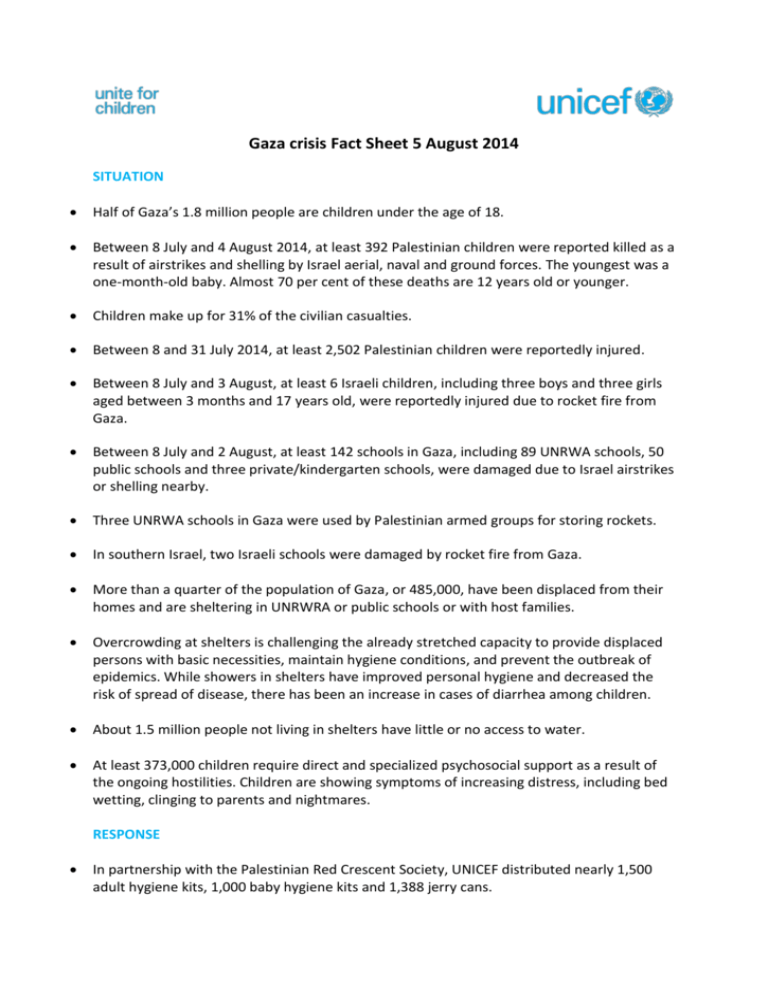
Gaza crisis Fact Sheet 5 August 2014 SITUATION Half of Gaza’s 1.8 million people are children under the age of 18. Between 8 July and 4 August 2014, at least 392 Palestinian children were reported killed as a result of airstrikes and shelling by Israel aerial, naval and ground forces. The youngest was a one-month-old baby. Almost 70 per cent of these deaths are 12 years old or younger. Children make up for 31% of the civilian casualties. Between 8 and 31 July 2014, at least 2,502 Palestinian children were reportedly injured. Between 8 July and 3 August, at least 6 Israeli children, including three boys and three girls aged between 3 months and 17 years old, were reportedly injured due to rocket fire from Gaza. Between 8 July and 2 August, at least 142 schools in Gaza, including 89 UNRWA schools, 50 public schools and three private/kindergarten schools, were damaged due to Israel airstrikes or shelling nearby. Three UNRWA schools in Gaza were used by Palestinian armed groups for storing rockets. In southern Israel, two Israeli schools were damaged by rocket fire from Gaza. More than a quarter of the population of Gaza, or 485,000, have been displaced from their homes and are sheltering in UNRWRA or public schools or with host families. Overcrowding at shelters is challenging the already stretched capacity to provide displaced persons with basic necessities, maintain hygiene conditions, and prevent the outbreak of epidemics. While showers in shelters have improved personal hygiene and decreased the risk of spread of disease, there has been an increase in cases of diarrhea among children. About 1.5 million people not living in shelters have little or no access to water. At least 373,000 children require direct and specialized psychosocial support as a result of the ongoing hostilities. Children are showing symptoms of increasing distress, including bed wetting, clinging to parents and nightmares. RESPONSE In partnership with the Palestinian Red Crescent Society, UNICEF distributed nearly 1,500 adult hygiene kits, 1,000 baby hygiene kits and 1,388 jerry cans. UNICEF is facilitating the work of the Coastal Municipal Water Utility (CMWU) with coordination, repairs to water tankers and $100,000 for critical repairs to infrastructure across Gaza. Only limited repairs could be carried out due to on-going fighting and lack of humanitarian access; six municipal water workers have been killed while on duty. Three UNICEF communal water points (bladders) have been installed and 10 more are awaiting approval by Israeli authorities. Vouchers for water, hygiene products and food were distributed to 2,300 vulnerable families whose homes have been destroyed through a joint WFP-UNICEF programme, building on WFP’s existing food voucher system. The aim is to support up to 10,000 families. From the very first days of the current escalation, UNICEF-supported emergency psychosocial teams have been deployed to provide initial psychosocial support to affected children, reaching 1,870 children across the Gaza Strip so far. Last week, radio spots were aired on radio stations to alert children and their families on the dangers posed by unexploded ordnance (up to 1 million people in Gaza were reached). However, since the bombing of the power station and the lack of electricity in Gaza, this form of messaging is no longer effective. UNICEF will ensure that all protection partners working in the collective shelters deliver messaging verbally. Since July 20, UNICEF has also been using mobile phones to send out text messages that can guide caregivers on how to keep children safe, how to deal with psychosocial distress; and how to prevent and respond to child abuse. A Child Protection Helpline has been operating 24/7 with increased capacity to take 30 calls at one time. Since 8 July 2014, Sawa has been able to provide counselling to 1,277 callers from Gaza, including 377 from children. UNICEF through its partnership with MAAN is providing daily specialized psychosocial support and extracurricular activities to 2,000 children in six shelters in Gaza city that are managed by Ministry of Social Affairs and other partners. UNICEF has started distributing 6,000 hygiene kits and 6,000 jerrycans to displaced persons in public schools; three communal water points have been installed. UNICEF is providing hospitals with life-saving drugs and consumables. At a time when the health care system is under severe strain, these supplies can be vital.

